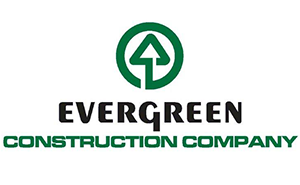
With the 2019 long legislative session upon us, I am excited to announce the release of the North Carolina Housing Coalition’s 2019 County Profiles. Over the coming weeks I will be meeting with the members of the General Assembly to discuss the state’s housing investment. I will update you on those meetings and how you might be able to follow up with your elected officials to reinforce the message that North Carolina needs to rise to meet its incredible statewide need.
Updated County Profiles
A home is affordable to a family when it costs no more than 30% of their household’s income. For the last several years, our county profiles have tracked the size of the county-level affordable housing need by giving some context to the two very basic variables in that equation — “How much does the house cost?” and “How much money do you make?” Last year, we added eviction and foreclosure data to get a sense of how many people were falling off the edge of the housing market. This year, we are digging deeper into a family’s housing costs by including energy burden data.
If you are a renter below 50% AMI, Wake County is the ONLY county in the state with an affordable energy burden.
Energy Burden
There is no widely accepted threshold that establishes energy cost burden. However, the U.S. Department of Health and Human Services classifies an energy burden above 6% of a family’s household income as “unaffordable.” You’ll find in the energy section of the profiles that we’ve labeled counties as “affordable”, “unaffordable”, and “severely unaffordable” for renters and homeowners making less than 50% of the area median income (AMI). If you are a renter below 50% AMI, Wake County is the ONLY county in the state with an affordable energy burden. For homeowners in that income range, there are none. You can read more about Energy Burden in our December Housing Matters.

Nearly 1.1 million households in the state are cost-burdened.
Key Data Points
While the number of cost-burdened households in the state has gone down by nearly 116,000, we still have nearly 1.1 million households in the state that are cost-burdened. The number of eviction filings in the state has gone up slightly to 168,847.
Counties with highest percentage of Cost-Burdened Renters
- Watauga (68%)
- Camden (63%)
- Northampton (60%)
- Perquimans (59%)
- Jones (58%)
Counties with the highest number of Cost-Burdened Renters
- Mecklenburg (78,862)
- Wake (55,714)
- Guildford (38,568)
- Cumberland (31,659)
- Durham (28,917)
Largest difference in the rent affordable to households making the mean renter wage and the average cost of a 2 bedroom apartment
- Currituck (-$609)
- Watauga (-$587)
- Chatham (-$525)
- Camden (-$510)
- Johnston (-$455)
Counties with the highest number of eviction filings compared to cost-burdened renters
- Nash (78%)
- Edgecombe (72%)
- Wilson (54%)
- Vance (52%)
- Guildford (43%)
Counties with highest percentage of Cost-Burdened Homeowners
- Dare (35%)
- Tyrell (35%)
- Chowan (32%)
- Bertie (32%)
- Warren (32%)
Counties with the highest number of Cost-Burdened Homeowners
- Mecklenburg (43,947)
- Wake (41,769)
- Guilford (23,160)
- Forsyth (16,846)
- Cumberland (16,217)
Counties with the highest number of foreclosures compared to cost-burdened homeowners
- Jackson (10%)
- Onslow (6%)
- Cumberland (5%)
- Pasquotank (4%)
- Rockingham (4%)
Sources
The County Profiles are designed to be used by advocates as an education tool in their communities and with their local, state, and federal elected officials. The data is gathered from a variety of sources including:
- The National Low Income Housing Coalition’s 2018 Out of Reach Report;
- The most recent 2013-2017 American Community Survey 5-Year Estimates from the US Census Bureau;
- The most recent 2017 Occupational Employment Statistics data from the Bureau of Labor Statistics;
- The Low-Income Energy Affordability Data from the US Department of Energy; and
- The 2016-2017 county court data from the North Carolina Administrative Office of the Courts.
In addition to the individual county profiles, you can access the underlying data on our website.
Thanks to the team at FatCat Strategies for their design work, Patrick McHugh at the Justice Center for his assistance with the energy burden data, Anne Ehlers and Haley Solomon for their editing work, and all of you who continue to provide feedback to make these tools better.
Introductions and Goodbyes
 I am also excited to welcome Haley Solomon to the team as our new Membership and Communications Officer. This is Haley’s first full week at the Coalition, and she comes to us with a background as an AmeriCorps VISTA alumna who has played similar roles at Lily Pad Haven and the Power of the Dream. She is experienced in capacity building and community relations and has a BA from the University of North Carolina at Chapel Hill. I invite you to welcome her to her new role at hsolomon@nchousing.org.
I am also excited to welcome Haley Solomon to the team as our new Membership and Communications Officer. This is Haley’s first full week at the Coalition, and she comes to us with a background as an AmeriCorps VISTA alumna who has played similar roles at Lily Pad Haven and the Power of the Dream. She is experienced in capacity building and community relations and has a BA from the University of North Carolina at Chapel Hill. I invite you to welcome her to her new role at hsolomon@nchousing.org.
 We will also be saying goodbye to Anne Ehlers at the end of this month. Anne worked at the Coalition from 2009-2014 and returned in 2017 part-time. She will join the team at NC Health News in March. We are incredibly grateful for her years of service and are sad to see her go, but excited for new opportunities. I know many of you have developed a relationship with Anne over the years. Please take some time to reach out, thank her, and wish her well. aehlers@nchousing.org
We will also be saying goodbye to Anne Ehlers at the end of this month. Anne worked at the Coalition from 2009-2014 and returned in 2017 part-time. She will join the team at NC Health News in March. We are incredibly grateful for her years of service and are sad to see her go, but excited for new opportunities. I know many of you have developed a relationship with Anne over the years. Please take some time to reach out, thank her, and wish her well. aehlers@nchousing.org








